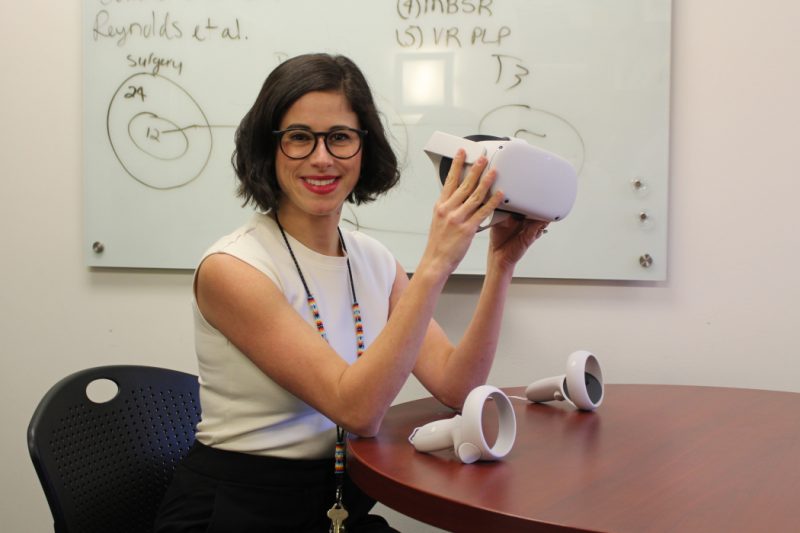In a recent study posted to the bioRxiv* server, researchers at Boston University made a chimeric recombinant severe acute respiratory syndrome coronavirus 2 (SARS-CoV-2) encoding the spike (S) glycoprotein gene of Omicron in the backbone of an ancestral SARS-CoV-2 isolate.

Background
Omicron BA.1 is now the predominant SARS-CoV-2 variant of concern (VOC), which is highly transmissible in fully vaccinated populations and those with acquired immunity post-natural infection. Thankfully, it causes mild coronavirus disease 2019 (COVID-19) illness. However, Omicron S differs from the ancestral SARS-CoV-2 isolate, Wuhan-Hu-1, by 59 amino acid mutations, and 37 of those reside in the S protein. Thus, the researchers investigated whether the S protein controls Omicrons' pathogenic and antigenic behavior.
About the study
In the present study, researchers used a modified form of cyclic polymerase extension reaction (CPER) to make a chimeric Omi-S virus. This method yielded 0.5-5 x 106 plaque-forming units (PFU) per ml of virus stocks within two days of transfection.
For in vitro studies, the team infected angiotensin-converting enzyme 2 (ACE2)/ transmembrane serine protease 2 (TMPRSS2)/Caco-2 and Vero E6 cells with Omi-S at a multiplicity of infection (MOI) of 0.01 and monitored viral propagation by flow cytometry and the plaque assay. Next, they used human induced pluripotent stem cell-derived lung alveolar type 2 epithelial (iAT2) cells to monitor the secretion of viral progeny on the apical interface of cells at 48 hours-post infections (hpi) and 96 hpi. The iAT2 cells, grown as an air-liquid interface (ALI) culture, were infected by Omi-S at an MOI of 2.5.
Further, the researchers evaluated Omi-S in vivo fitness compared to Omicron BA.1 in K18-hACE2 mice. They intranasally inoculated mice aged 12 to 20 weeks with 104 PFU of Omi-S. They collected mice lungs at two and four dpi for virological and histological analysis. Furthermore, the team examined whether Omi-S exhibited a similar immune escape phenotype as naturally-occurring Omicron. They performed a multicycle neutralization assay in a setting mimicking a seropositive individual.
Study findings
The primary study finding was that although the S protein is the most heavily mutated site in Omicron, it alone is not responsible for its attenuated infectivity. Thus, Omi-S, a chimeric recombinant with Omicron S in a backbone of Wuhan-Hu 1, developed vaccine resistance due to a cumulative effect of mutations distributed along the length of the S protein, especially the 10 receptor-binding motif (RBM) mutations. RBM is harbored inside the receptor-binding domain (RBD) of the S1 domain of S protein and makes direct contact with ACE2 receptors. Two mutational hotspots within the RBM imparted Omicron S with the ability to resist neutralization. One was the E484A substitution, and the other comprised a cluster of five substitutions, Q493R, G496S, Q498R, N501Y, and Y505H.
In in vitro infection assays, Omi-S exhibited much higher replication efficiency than Omicron. Further, in K18-hACE2 mice, Omi-S caused a severe disease leading to around 80% mortality, indicating that mutations outside of S are the primary determinants of the attenuated pathogenicity of Omicron. The authors emphasized the need for further studies to identify those mutations and elucidate their mechanisms of action. Infection with Omi-S, but not Omicron, elicited neurologic signs, such as hunched posture and lack of responsiveness, in K18-hACE2 mice. It indicated that Omi-S preserved the neuroinvasion property, and the determinants of this property lay outside S. In addition, Omi-S exhibited a higher propensity to replicate in the bronchiolar epithelium.
Sera from individuals vaccinated with two doses of a messenger ribonucleic acid (mRNA) COVID-19 vaccine poorly neutralized Omicron. Omi-S also exhibited similar half maximal neutralizing dilution (ND50) values as Omicron, suggesting that the Omicron S protein, when incorporated into a WT virus, behaved the same way as in Omicron.
Conclusions
Intriguingly, the study results showed that the receptor-binding capacity of Omicron S remained intact and higher relative to the Wuhan-Hu-1 and Delta RBDs. It points at an evolving Omicron S that hinders antibody binding but preserves receptor engagement, opening up new research avenues. For instance, next-generation broad-spectrum COVID-19 vaccines should target the conserved and structurally constrained regions of S involved in ACE2 recognition.
Further, the study results showed that mutations in the Omicron S protein were responsible for this VOC's ability to evade infection-acquired and vaccine-induced immunity; however, they were not responsible for the decrease in Omicron infectivity. Determination of SARS-CoV-2 proteins driving Omicron pathogenicity could help devise better diagnostics and COVID-19 mitigation strategies.
*Important notice
bioRxiv publishes preliminary scientific reports that are not peer-reviewed and, therefore, should not be regarded as conclusive, guide clinical practice/health-related behavior, or treated as established information.
- Chen, D., Kenney, D., Chin, C., Tavares, A., Khan, N., & Conway, H. et al. (2022). Role of spike in the pathogenic and antigenic behavior of SARS-CoV-2 BA.1 Omicron. bioRxiv. doi: 10.1101/2022.10.13.512134 https://www.biorxiv.org/content/10.1101/2022.10.13.512134v1
Study indicates that the major determinants of SARS-CoV-2 pathogenicity reside outside of the spike protein - News-Medical.Net
Read More

No comments:
Post a Comment